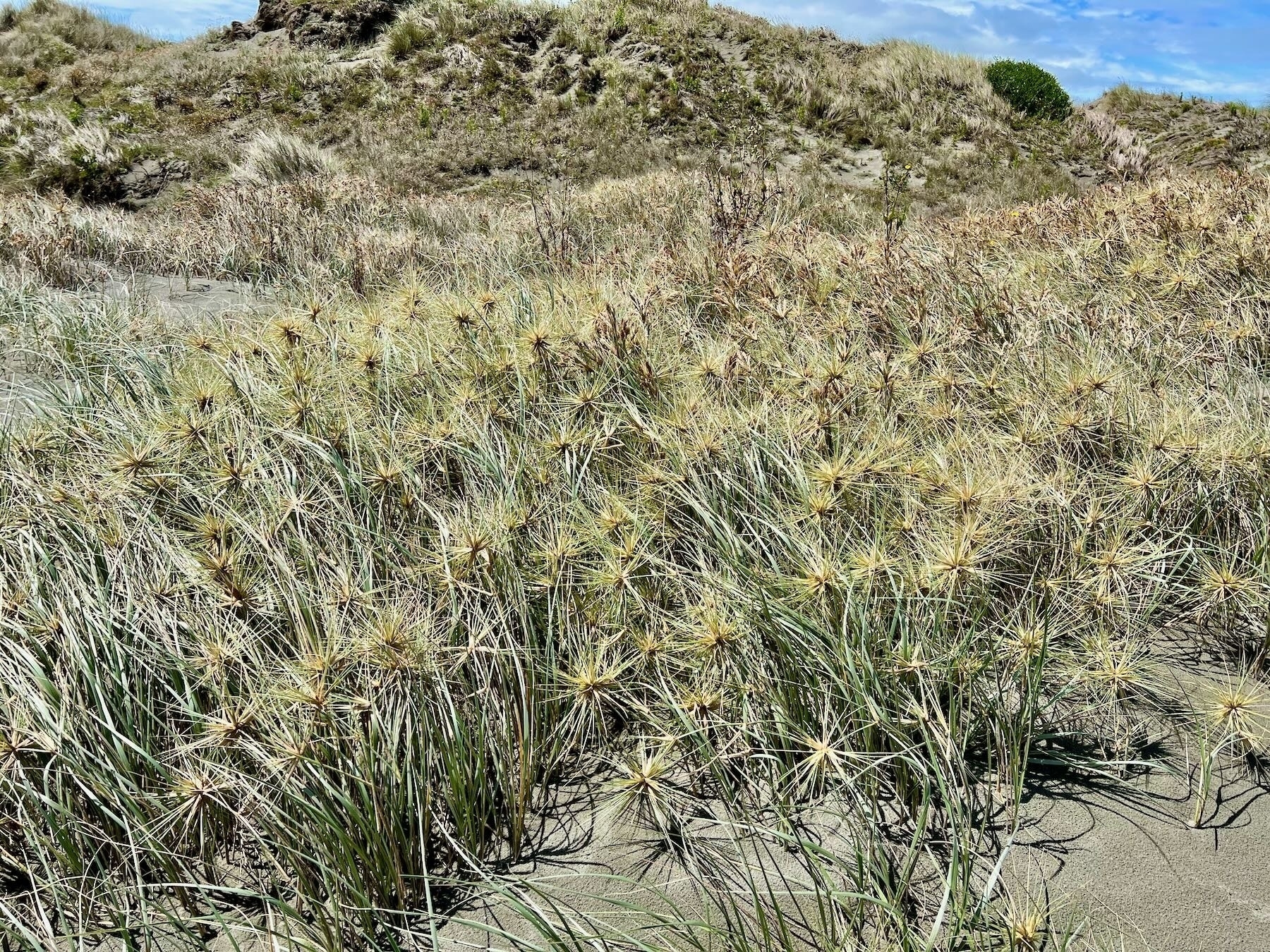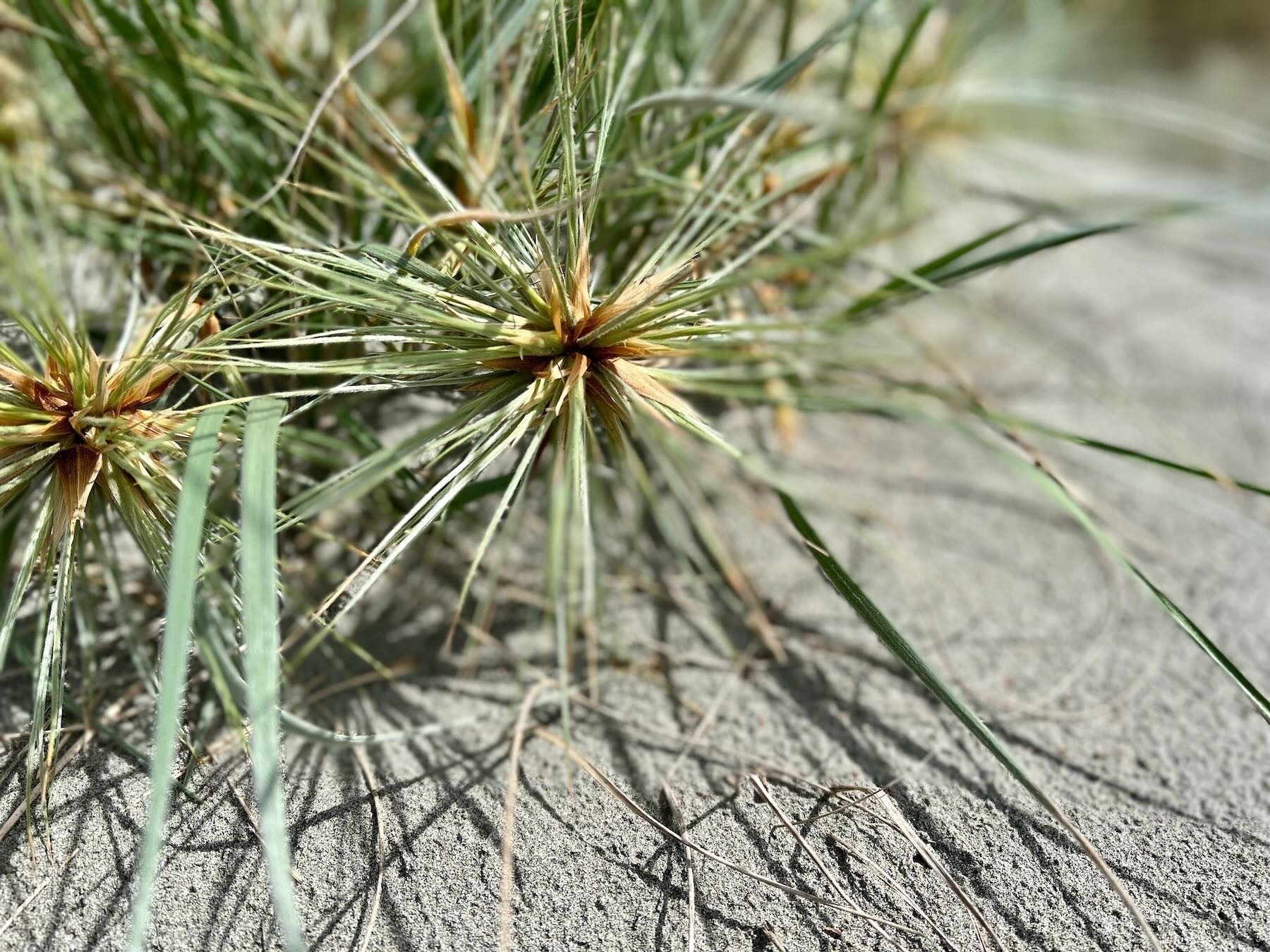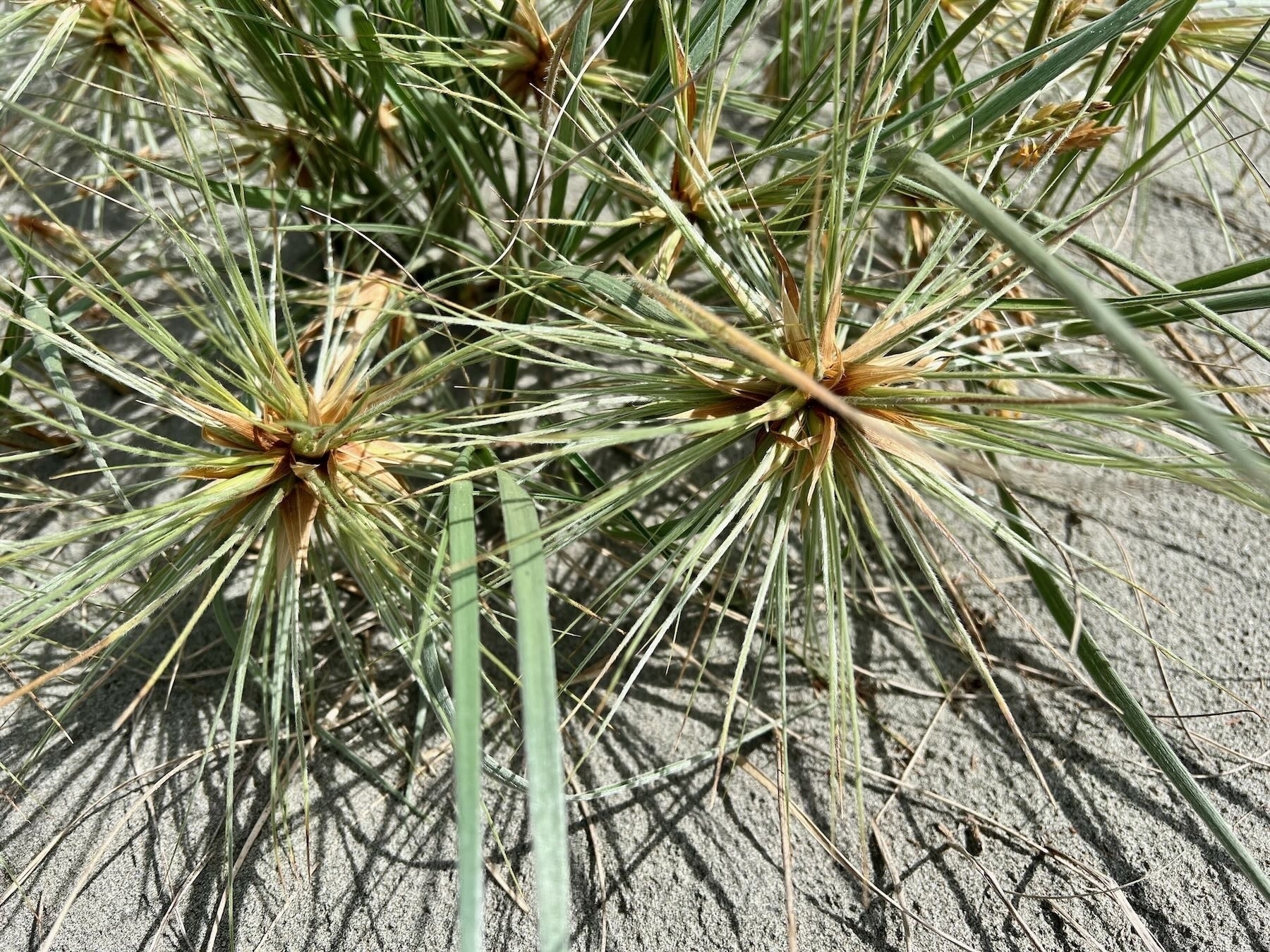
December is the time when we see Spinifex seedheads covering the dunes. Once the plant releases them they will blow and roll across the dunes and the sand, finding a place to stay and grow.



Coastal Restoration Trust say:
Spinifex (Spinifex sericeus R.Br.) is the major indigenous sand dune grass that occurs on foredunes throughout most of the North Island and the upper part of the South Island. Sometimes referred to as silvery sand grass, or kōwhangatara, it is the dominant sand binding plant on the seaward face of the foredune where its long trailing runners and vigorous growth make it an ideal sand dune stabiliser.
Where stands of spinifex are vigorous, runners will trail over recent erosion scarps caused by storms and high seas. These runners will encourage the build-up of wind distributed sand along the scarp and eventually a return to a low-angle dune face typical of a Spinifex dominant dune.
Dune Restoration Trust have some pamphlets that include interesting info.
Spinifex is the major indigenous sand dune grass that occurs on foredunes throughout most of the North Island and the upper part of the South Island.
Sometimes referred to as silvery sand grass, or kowhangatara, spinifex is the dominant sand binding plant on the seaward face of the foredune where its long trailing runners and vigorous growth make it an ideal sand dune stabiliser.
Spinifex is dioecious, i.e. male and female flowers are borne on separate plants.
The male plant produces pale brown, branched, but compact flowers about 5 cm long on short branches
The flowers of the female plant develop into large, softly-spiny, spherical seedheads about 20-30 cm in diameter.
Spinifex is an effective sand-binding plant that is dominant on the seaward face of foredunes. It is deep-rooting, thrives in raw sand, and is tolerant of salt spray, prolonged dryness, extreme temperatures, high light intensity, and strong wind